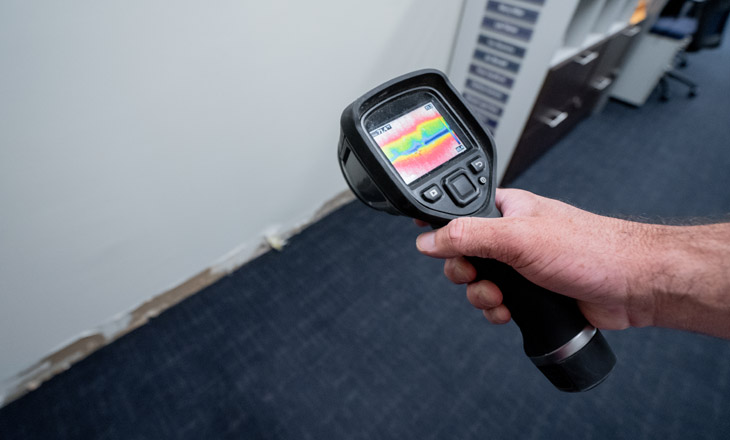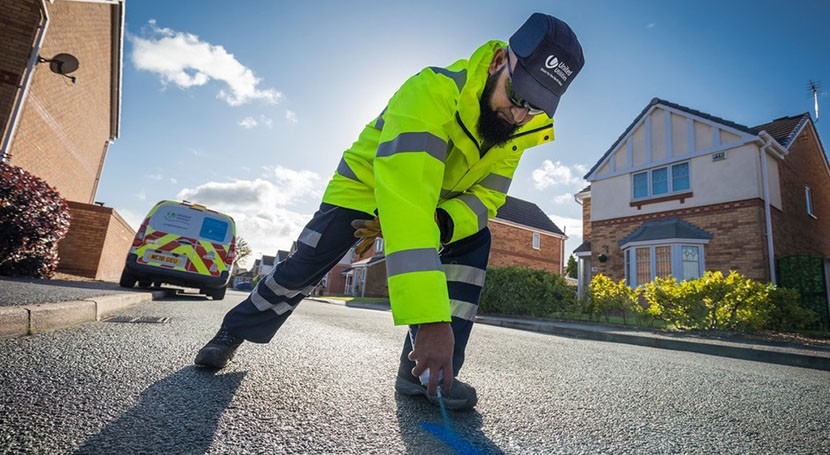Comprehensive Guide to Water Leak Detection for Property Owners and Services
Comprehensive Guide to Water Leak Detection for Property Owners and Services
Blog Article
Innovative Solutions for Very Early Detection of Water Leaks in Structures and Facilities
From cutting-edge leakage detection technologies to the release of IoT sensors for real-time tracking, the landscape of leakage avoidance is developing quickly. Automated water circulation analysis systems are reshaping how leaks are identified and resolved, paving the method for an aggressive technique to water leak discovery.
Advanced Leak Discovery Technologies
Advanced leakage discovery innovations, furnished with advanced sensors and algorithms, play an essential function in quickly recognizing and determining water leaks in various setups. These technologies employ a mix of acoustic, thermal, and electro-magnetic picking up methods to detect leakages accurately. Acoustic sensors identify the audio of leaving water, enabling precise localization of the leak resource. Thermal imaging discovers temperature changes brought on by water leakage, offering one more reliable technique for leakage identification. Electromagnetic sensing units can determine changes in electromagnetic fields brought on by water, offering yet one more layer of leak discovery capability.

IoT Sensors for Real-Time Tracking
In the world of modern-day water leakage discovery, the combination of IoT sensors for real-time tracking represents an essential development in boosting proactive leakage detection capacities. These sensing units supply continual monitoring of water systems, providing real-time information on water flow rates, stress variants, and temperature level adjustments. By leveraging IoT modern technology, these sensing units can find also the tiniest abnormalities in water use patterns, allowing early identification of prospective leakages prior to they intensify into major concerns.
IoT sensors transfer data to a central system, where innovative formulas examine the information and generate alerts or alerts when abnormalities are spotted. This real-time monitoring capability enables homeowner or center supervisors to quickly attend to leakages, lessening water damages, reducing fixing costs, and preserving water sources.
Additionally, IoT sensors can be incorporated with building monitoring systems, enabling automated responses to identified leakages, such as shutting down water shutoffs or triggering pumps to alleviate the impact of leaks. Generally, the implementation of IoT sensing units for real-time surveillance significantly boosts the effectiveness and performance of water leakage discovery in structures and facilities.
Artificial Intelligence Algorithms for Leakage Forecast

One secret benefit of making use of artificial intelligence for leakage forecast is its capacity to continuously learn and boost its precision in time. As even more information is collected and fed right into the formula, it can fine-tune its predictions and adapt to changing conditions, inevitably enhancing the integrity of leak detection systems.
Furthermore, artificial intelligence algorithms can aid in Recommended Reading identifying refined indicators of leaks that may go undetected by standard tracking techniques. water leak detection. By evaluating complicated data embed in real-time, these algorithms can give early warnings and informs, enabling prompt intervention and preventative upkeep to minimize possible water damage and connected prices
Using Thermal Imaging for Leakage Detection
Thermal imaging technology provides a promising approach for finding water leakages in different systems and frameworks. By making use of infrared radiation and temperature differences, thermal imaging video cameras can recognize hidden leakages that are not easily visible to the naked eye. When water runs away from pipelines or structures, it commonly alters the temperature level of the surrounding area, producing temperature level differentials that thermal cameras can catch. These temperature abnormalities are after that translated right into visible images, highlighting the precise area of the leakage.
One of the essential benefits of thermal imaging for leak discovery is its non-intrusive nature. Unlike typical approaches that might need breaking into walls or floors to find leaks, official statement thermal imaging permits non-destructive testing. This not only saves time and minimizes prices yet likewise lessens interruption to the building or facilities being examined. In addition, thermal imaging can quickly check big areas, offering a comprehensive summary of prospective leakage sources in a timely fashion. Generally, making use of thermal imaging modern technology boosts the performance and accuracy of water leak detection, making it a valuable tool for keeping the stability of buildings and infrastructures.
Automated Water Circulation Evaluation Solutions
How can computerized water circulation analysis systems change the detection and monitoring of leaks in numerous systems and frameworks? Automated water circulation evaluation systems provide a positive strategy to leak discovery by continuously checking water circulation rates and patterns. By developing standard data, these systems can promptly identify discrepancies that may show a leakage, allowing prompt treatment to stop considerable damages.
These systems make use of advanced algorithms to assess real-time information and provide instant informs when abnormalities are discovered, enabling speedy activity to be taken. Additionally, automatic water flow analysis systems can be incorporated with building management systems or IoT systems, boosting general performance and enabling remote surveillance capabilities.
In addition, the data collected by these systems can be used for anticipating upkeep objectives, assisting to recognize potential weak factors in the facilities prior to leaks take place. Generally, the implementation of automatic water circulation analysis systems can dramatically improve leak detection and monitoring methods, eventually bring about cost financial savings, reduced water wastage, and raised sustainability in structures and infrastructure.

Final Thought
Finally, the assimilation of sophisticated leak detection technologies, IoT sensors, maker learning formulas, thermal imaging, and automatic water flow analysis systems supplies cutting-edge options for early detection of water leakages in buildings and facilities. These technologies make it possible for real-time monitoring, forecast of leaks, and efficient discovery techniques to avoid water damages and wastage. Executing More hints these solutions can aid in keeping the integrity and sustainability of water systems in different settings.
Report this page